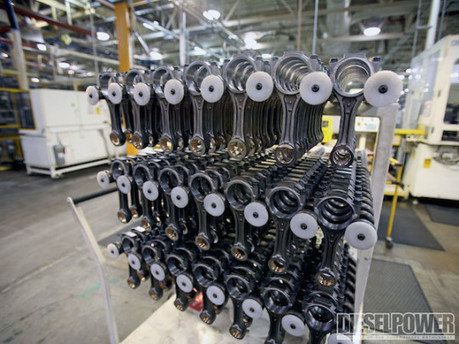Jun 15 2014
The Goals That Matter: SQDCM | Mark Graban
See on Scoop.it – lean manufacturing
Blog post at Lean Blog : “Today is the start of the 2014 World Cup, which means much of the world will be talking about goals.I’m not really a soccer, I mean football, fan but I’m all for goals. In the Lean management system, we generally have five high-level goals. These were the goals taught to us in the auto industry, where I started my career, and they apply in healthcare.”
As I learned it, it was “Quality, Cost, Delivery, Safety, and Morale” -(QCDSM) rather than SQDCM. I am not sure the order matters that much. The rationale for grouping Quality, Cost, and Delivery is that they matter to customers, while Safety and Morale are internal issues of your organization, visible to customers only to the extent that they affect the other three.
They are actually dimensions of performance rather than goals. “Safety,” by itself, is not a goal; operating the safest plants in your industry is a goal. In management as taught in school, if you set this goal, you have to be able to assess how far you are from it and to tell when you have reached it. It means translating this goal into objectives that are quantified in metrics.
In this spirit, you decide to track, say, the number of consecutive days without lost time accidents, and the game begins. First, minor cuts and bruises, or repetitive stress, don’t count because they don’t result in the victims taking time off. Then, when a sleeve snagged by a machine pulls an operator’s hand into molten aluminum, the victim is blamed for hurting the plant’s performance.
Similar stories can be told about Quality, Cost, Delivery and Morale, and the recent scandal in the US Veterans’ Administration hospitals shows how far managers will go to fix their metrics.
To avoid this, you need to reduce metrics to their proper role of providing information an possibly generating alarms. In health care, you may measure patients’ temperature to detect an outbreak of fever, but you don’t measure doctors by their ability to keep the temperature of their patients under 102°F, with sanctions if they fail.
Likewise, on a production shop floor, the occurrence of incidents is a signal that you need to act. Then you improve safety by eliminating risks like oil on the floor, frayed cables, sharp corners on machines, unmarked transportation aisles, or inappropriate motions in operator jobs. You don’t make the workplace safer not by just rating managers based on metrics.
In summary, I don’t see anything wrong with SQDCM as a list. It covers all the dimensions of performance that you need to worry about in manufacturing operations, as well as many service operations. Mark uses it in health care, but it appears equally relevant in, say, car rental or restaurants. I don’t see it as universal, in that I don’t think it is sufficient in, for example, research and development.
And, in practice, focusing on SQDCM easily degenerates into a metrics game.
See on www.leanblog.org



Jan 16 2015
The World’s Most Dangerous Job? | James Lawther
“You shouldn’t believe everything you read on the internet, but according to some of the more reliable sources, during World War II:
Source: www.squawkpoint.com
This is a great story both about effective visualization of series of events in space-time and about proper interpretation in the face of sample bias.
Manufacturing, thankfully, is less dangerous than flying bombers in World War II was, but it is still more dangerous than it should be. Posting the locations of injuries on a map of the human body is also an effective way to identify which body parts are most commonly affected, and which safety improvements are most effective.
But are all injuries reported? Many organizations blame the victims for lowering their safety metrics, and discourage reporting. As a consequence, we can expect under-reporting and a bias towards injuries severe enough that reporting is unavoidable.
If you get data on an entire population, or if you thoughtfully select a representative sample, you can avoid bias, but many of the most commonly used samples are biased, often in ways that are difficult to figure out.
Customer surveys of product quality, for example, are biased by self-selection of the respondents. Are unhappy customers more likely to take the opportunity to vent than happy customers to praise? If so, to what extent? The effect of self-selection is even stronger for posting reviews on websites.
See on Scoop.it – lean manufacturing
Share this:
Like this:
By Michel Baudin • Blog clippings 2 • Tags: Quality, Safety, Sample bias, Sampling, Statisics, Visualization